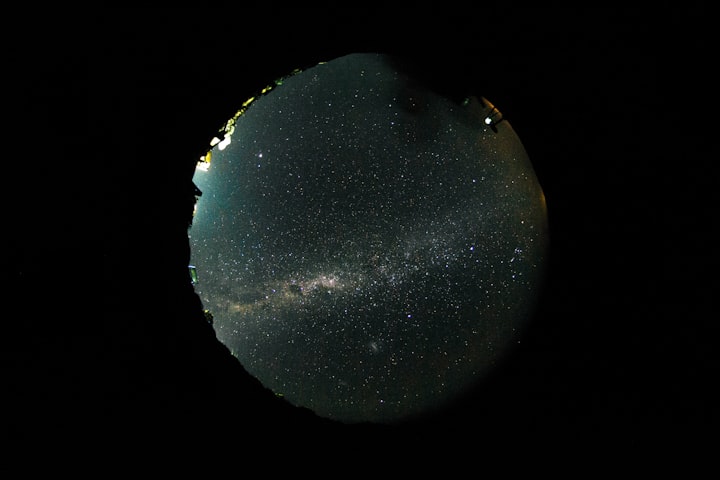Lost Satellite Sends Last Image Before Death
Revealing Secrets of Black Holes

For centuries, the universe has been a source of awe and wonder for humankind. Among its most mysterious phenomena is the enigmatic black hole – an object that creates such a powerful gravitational pull that no form of matter or light can escape its grasp. While we may not yet understand all there is to know about these enigmatic structures, recent discoveries have provided insight into their role in the formation of galaxies and the jets they produce. This article will explore these findings and offer further discussion on our understanding of black holes.
On February 17th, 2023, the Japanese Aerospace Exploration Agency launched the Hitomi satellite with the hopes of using X-ray observations to provide researchers with invaluable information about galaxy clusters and black hole activity. Unfortunately, due to a series of technical errors, the mission was cut short and the satellite tumbled out of control before sending its last image. In this article, we will explore the details behind what caused the Hitomi satellite's demise and examine how these events can be avoided in future missions.
Scientists have been able to take advantage of the data collected by Hitomi before its untimely demise. A Nature paper recently published in collaboration with the JAXA team outlined the remarkable discovery that the hot and dense gases at the center of the Perseus cluster were moving at a much slower speed than expected. This was an unexpected finding for researchers, as they had anticipated a great deal of turbulence and chaotic activity due to the gravity from dark matter within this region.
Further analysis has revealed that these results can be attributed to black holes, which are believed to influence the eventual size of galaxies. The study also proposed potential explanations as to why such extreme differences in gas velocity exist between different galaxy clusters. Understanding this phenomenon could prove invaluable in understanding the evolution of galaxies, as black holes are believed to play an important role in controlling their growth.
A new discovery has provided an unprecedented insight into the mysterious workings of black holes and their role in the formation of galaxies. Astronomers have recently observed a supermassive black hole at close range, located in the Drago constellation some 3.9 billion light-years away, shooting out a jet of particles at near light speed. This remarkable find was made possible thanks to the invaluable data collected by a satellite prior to its premature loss. The findings open up exciting opportunities for further research into this enigmatic cosmic phenomenon.
Recent research conducted by scientists has revealed the unprecedented detailed measurements of a relativistic jet, one of the most powerful phenomena in space. This jet, measuring about two euro coins in size, was discovered only five years ago and is now being observed with unprecedented accuracy thanks to radio telescopes. Researchers have been able to gain a better understanding of how these jets are formed and what effects they have on their surroundings. The findings provide valuable insight into the science of black holes and star formation.
The observations of the relativistic jet have shed light onto the process of accretion – the act of matter being drawn inwards due to a gravitational force. This insight allows us to trace the origin of these jets and how they evolve over time, giving us an understanding of a black hole's environment. Additionally, our knowledge of this phenomenon may also give us clues as to what happens when a star is consumed by a black hole.
By studying this jet, astronomers have been able to gain insight into how much energy is released during the formation of powerful jets. This helps scientists determine how much gas and dust must be present for such events to occur, helping them calculate the distribution and abundance of materials in our universe. Furthermore, it also gives us a better understanding of how a black hole and its host galaxy interact.
The newfound knowledge of accretion disks has been used to support Stephen Hawking’s theory that black holes may be portals to another universe. This idea suggests that information may escape from the supermassive black hole at the center of our own Milky Way galaxy, potentially providing us with an insight into the physical laws and conditions of other universes. While this is an exciting prospect, there is much more research that needs to be done in order for such a theory to be proven.
For centuries, black holes have been a source of intrigue and mystery for astronomers and physicists alike. The enigmatic structures have intrigued scientists for generations, and recently, new discoveries about their role in the formation of galaxies and the powerful jets they create have given us valuable insights into the universe's complex mysteries. With new data from lost satellites and advanced radio telescopes, we are on the brink of understanding these enigmatic objects like never before. In this article, we explore the latest developments in our understanding of black holes and what they mean for our view of the universe.
About the Creator
Izabela Bąk
I'm a passionate business analyst.






Comments
There are no comments for this story
Be the first to respond and start the conversation.